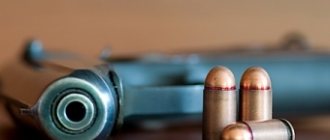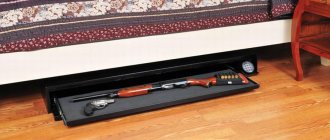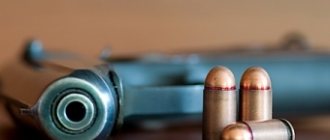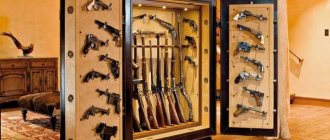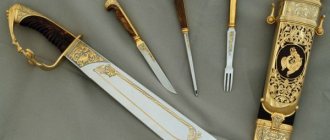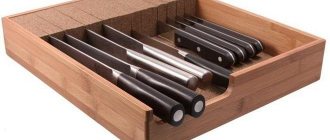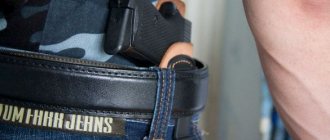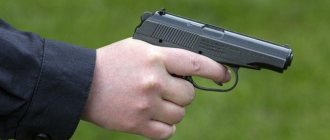A hunter has the right to purchase weapons on the basis of a license (Article 13 of the Law on Weapons of the Russian Federation of November 13, 1996). The legislation also regulates the procedure for its storage and determines the authorized supervision structures. Control functions over the circulation of civilian and service weapons are assigned to the internal affairs bodies. They are authorized to carry out supervision, for which they are endowed with appropriate rights.
Many owners of civilian hunting rifles are interested in the requirements for a safe for storing hunting weapons. After all, you will need to deal with the local inspector two or three times a year. The duties of the district police officer include periodically checking the safety of the weapons arsenal stored at home in the territory entrusted to him. What does the law say, what are the legal aspects of storing smooth-bore and rifled hunting rifles? Below are a number of documents regulating this procedure.
Legislative - legal basis
Decree of the Russian Government of July 21, 1998 No. 814 “On measures to regulate the circulation of civilian and service weapons and ammunition for them on the territory of the Russian Federation”:
In pursuance of the Law on Weapons of the Russian Federation of November 13, 1996, the Government of the Russian Federation approved the rules for the circulation of civilian and service weapons and ammunition on the territory of the Russian Federation. The rules regulate the requirements for the storage conditions of service and civilian weapons (together with their cartridges), which are set out in the chapter “Storage of weapons and cartridges”.
Regarding individuals, the requirements are set out in two articles:
Article 54 establishes the procedure for citizens to obtain from the internal affairs bodies the appropriate permits for the storage, use, and carrying of civilian weapons.
Article 59 of the Decree obliges citizens of the Russian Federation to store guns, as well as ammunition, at their place of residence. It is necessary to ensure their safety, security, and also to prevent unauthorized access by unauthorized persons.
Here is a list of permitted places where the gun is to be stored:
- lockable safes;
- metal cabinets;
- boxes made of high-strength materials;
- wooden boxes covered with iron.
That is, in fact, the rules for storing hunting weapons are not detailed. In particular, the dimensions of a safe for storing hunting weapons are not regulated.
Storage requirements do not regulate the dimensions of the safe, metal cabinet, the number and degree of secrecy of locks, or the method of installation (internal, padlocks). There are no requirements for installing an alarm system in the room, additional locks, metal boxes on metal entrance doors, or metal bars on windows.
There are no requirements for fastening or bolting safes, metal cabinets, or wooden boxes to walls or floors. It is said that the internal affairs bodies are checking the conditions for ensuring the safety of registered hunting weapons.
Also, the procedure for storing guns along with ammunition in places of temporary stay of citizens is not detailed. All that is required is to prevent unauthorized persons from accessing the weapon.
Athletes who are members of sports shooting societies and clubs are allowed to store weapons and ammunition at sports facilities. If athletes go to training camps or various types of competitions using sports shooting rifles, they are allowed to store a rifle arsenal at the location of the shooting competitions.
Rules for storing traumatic weapons at home in 2022
Requirements for storing and carrying traumatic weapons in Russia last changed in January 2022. They should be carefully studied by every person who decides to purchase self-defense equipment.
Innovations in the law “On Weapons”
Additions have been made to this law to allow owners of civilian weapons to independently use old cartridges several times. The legality of such actions is confirmed by amendment No. 219-F3. The permit is valid for both smooth-bore shotguns and rifled carbines, rifles, if the reloaded charges are used not for sale, but for personal use.
Decree of the Government of the Russian Federation No. 1591 also introduced changes for owners of weapons for service, civilian purposes and cartridges for them on the territory of Russia. According to the decree, users must store in special cabinets or safes not only barrels with ammunition, but also gunpowder and primers for reloading.
Requirements for storing weapons
According to the current legislation of the Russian Federation, only citizens who have obtained the appropriate license from the LRO (Permitting Department) have the right to store traumatic or firearms at home. In addition, each unit must be registered with the Department of Internal Affairs (internal affairs department), at the actual place of residence.
Detailed requirements and nuances for storing weapons are given in Article 59 of the Weapons Law. The main points include the following:
- combat, traumatic or hunting units and cartridges are stored at the actual place of residence of the owner;
- all precautions are required to ensure the inviolability of weapons and charges;
- an increased level of security must be ensured;
- access of unauthorized people is excluded;
- The safe is equipped only with a working lock.
What types of weapons can be stored without permission?
Some types of self-defense equipment are allowed to be purchased and stored without licensing and registration documentation. This category includes:
- Pneumatics for sports and recreational shooting with muzzle energy not exceeding 7.5 J, caliber up to 4.5 mm.
- Flare guns, signaling devices.
- Models and replicas of all types of small arms.
- Decommissioned models that cannot fire.
- Sport equipment.
- Electric, spark shockers.
- Aerosol, gas cans.
Rules for storing traumatic weapons
By law, injuries must be treated identically to firearms.
The owner needs to purchase a metal cabinet (safe) with a lock. If necessary, it must be shown to a local police representative to monitor storage conditions. Factory designs 100% satisfy all requirements for safety, security, and inaccessibility of unauthorized persons.
When transporting traumatic weapons, the relevant rules must be observed. The cargo is transported in a holster, case, and safety lock. Violation of these requirements leads to administrative liability.
In addition, you must have documents confirming your identity and a license to own a weapon. The best option for transportation in a car is to use an iron box.
What types of safes are there?
A factory or homemade cabinet made of metal or wood covered with iron is used as storage for trauma equipment. Safes differ in size, so before purchasing it, you need to compare the dimensions of the combat unit with the size of the box.
For trauma weapons, it is not necessary to separate into cells for the barrel and cartridges. You can store it in a special case with a secure lock. If you plan to purchase an additional hunting rifle, you should think about this option in advance.
In this case, it is wise to buy a large safe with separate cells. Storage facilities for traumatic weapons at home are distinguished by the following points:
- Availability of fastening devices. Some modifications are completely ready for installation and have holes for anchors on the rear wall.
- Thickness of the body part. The recommended value is at least 1 mm, while most factory safes are made of 3 mm metal.
- A type of castle. Each of the available options has its own advantages and disadvantages. For connoisseurs of classic locks, standard mechanical locks are quite suitable.
- Price. Cheap modifications for a traumatic pistol can be bought for 3-4 thousand rubles. At the same time, they have a limited volume; it’s unlikely that anything will fit in them except for one unit. Full-size analogues are presented with a wide price range (from 10 to 90 thousand rubles).
- Design. Modern gun safes have a decorative finish, in contrast to outdated designs that were produced primarily in black or silver. Original design ideas make it possible to choose and harmoniously install a drawer without disturbing the interior of the room.
Safe for a traumatic pistol - requirements
The main points required for gun safes are that they are made of metal or wood, covered with iron, and the presence of a lock. Such precautions prevent unauthorized people from gaining access to weapons and ammunition.
In addition, the box must be resistant to mechanical stress and fire, the thickness of the metal panels must be at least 2 mm. It is recommended to install a bolt structure on the door that locks the device in three or more directions. Locks for safes come in several varieties:
- mechanical locks with keys or code;
- electronic versions with code or magnetic card;
- biometric modifications that respond to a fingerprint or retina;
- complex mechanisms combining different types of protection.
Before purchasing a safe for traumatic weapons, you should carefully study its parameters and consumer reviews in order to choose the best option in terms of reliability, price, and dimensions.
Regulatory and technical basis
Instructions for organizing the work of internal affairs bodies to control the circulation of civilian and service weapons and ammunition on the territory of the Russian Federation (Order of the Ministry of Internal Affairs of the Russian Federation No. 288 dated April 12, 1999, as amended on July 15, 2013):
According to the instructions of the Russian Ministry of Internal Affairs, internal affairs officers check hunting weapons with a rifled barrel once every six months, and smooth-bore hunting weapons - once a year.
The storage of hunting weapons at home is written in the instructions of the Ministry of Internal Affairs (Order of the Ministry of Internal Affairs of the Russian Federation No. 504 of June 7, 2008), in strict accordance with Article 59 of the Law. It is stored in locked safes, metal cabinets, boxes made of high-strength materials, wooden boxes lined with iron.
If the above requirements are violated, the safety of the purchased weapon, as well as its cartridges, is not ensured, on the basis of Article 26 of the Federal Law of Russia, the possibility of cancellation and confiscation is provided:
- a previously issued license to purchase a gun;
- received a permit to store and carry a gun.
Types of gun safes
When choosing storage for weapons, it is worth considering that safes, including gun safes, differ in the following parameters:
- resistance to burglary
is an important characteristic that ensures the safety of weapons and excludes access by third parties, is ensured by various types of locks, the thickness of the metal used, the filling between the wall spaces and the design features of the safe; - fire resistance
is a characteristic that is not popular in gun safes; fireproof and burglary-resistant safes are most often purchased to store very expensive weapons (collectibles) or a large number of items; - capacity
- this characteristic means that safes can be small pistol safes for short-barreled weapons, edged weapons, ammunition and large ones for shotguns, rifles, carbines; Such safes differ in the number of trays - provided storage spaces inside the safe.
Conclusions on storage requirements for civilian hunting weapons
- The law obliges the owner of the weapon to ensure safety and exclude unauthorized access by unauthorized persons. Lock weapons in safes, metal cabinets or wooden boxes lined with iron. Our recommendation is to store weapons only in safes or metal cabinets. Do not use wooden boxes lined with iron for storage. Each meeting with the district inspector will require evidence of security. And it’s difficult to find such wooden boxes on sale. Having made it yourself, be prepared each time for lengthy explanations with the inspector.
- There are no requirements for bolting, screwing, or nailing a safe, metal cabinet, or wooden box to the walls or floor.
- The requirements of Article 165 of the Instruction of the Ministry of Internal Affairs regarding the separate storage of guns, as well as cartridges, apply only to legal entities. There are no such requirements for individuals. Our recommendation is to store your hunting rifle, as well as ammunition, in different internal compartments of a safe or metal cabinet, in order to avoid unnecessary questions from the local police officer. Separate storage will eliminate lengthy debates and disputes.
- Safes, metal cabinets, wooden boxes can be locked with internal or padlocks. The number of locks and the degree of their secrecy are not specified. Our recommendation is to buy safes and cabinets with a higher degree of lock security. Do not buy safes if they have low quality locks, such as those made in China. These locks are designed for apartment doors. Every tenth lock fails after serving for less than one year. Buy safes with high-quality special locks.
- The dimensions and wall thickness of the safe, metal cabinet, and wooden box are not specified. These parameters are regulated by the instructions of the Ministry of Internal Affairs only for legal entities. Our recommendation is to buy a metal gun cabinet with a steel thickness of at least three mm, with at least two locks. For expensive collectible weapons, buy safes with a body thickness of three mm and a door thickness of five mm. Buy a larger safe in case of a possible expansion of the arsenal of guns, or the purchase of a second or third barrel. It is better to take a safe that has certain fire resistance properties, as well as water resistance. They cost more. However, the high price is justified. Fire resistance guarantees protection of the gun, as well as ammunition, in the event of an indoor fire. The cartridges will not fire and there will be no cannonade if the fire gets close to the safe. Water resistance will protect against moisture penetration in case of flooding of the room. In a humid room, the cartridges will not become damp, and metal parts will not be subject to corrosion.
- There are no requirements for installing a metal entrance door, additional locks, metal boxes on the doors, metal grilles, or a fire and security alarm.
Basic requirements for a hunting safe and its selection
The requirements for a hunting safe in 2022 depend on the class, but there are general technical parameters that the product must meet. First of all, these are the design features, its structure:
- Body – a set of load-bearing, reinforcing and decorative elements;
- Treizer – compartment with an additional lock for storing cartridges;
- Door leaf with inner door cover with metal thickness corresponding to the class;
- Door lock with a deadbolt locking system, eliminating the possibility of unauthorized access;
- Cradle for fixing a hunting rifle;
- Anchor holes for fixing (for all safes weighing less than 100 kg).
There must be at least one anchor hole for every 500 mm of height. Moreover, the first is located in the bottom, and the second in the back wall. The crossbar system must provide fixation in three directions. The diameter of the active crossbar is from 15 mm with a stroke from 10 mm.
